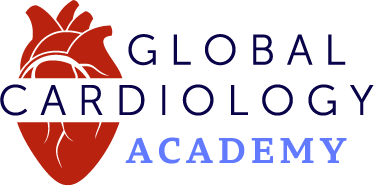Understanding Lipid and Lipoprotein Metabolism in Cardiovascular Health

Announcer:
You’re listening to Heart Matters on ReachMD. On this episode, we’ll hear from Dr. Robert Eckel, who’s a Professor Emeritus of Medicine with a primary appointment in the division of endocrinology, metabolism, and diabetes with a joint appointment in cardiology at the University of Colorado Anschutz School of Medicine, where he was previously the Charles A. Boettcher II Chair in Atherosclerosis. He’ll be discussing the clinical impacts of lipid and lipoprotein metabolism. Here’s Dr. Eckel now.
Dr. Eckel:
Lipids and lipoproteins are formed by two organ systems that enter these products or lipoproteins into the circulation. Almost all dietary fat is absorbed through the intestinal tract and packaged into the intestines to chylomicrons, which are secreted and peak two to three hours after we eat dietary fat and are cleared in people who have pretty normal levels of triglycerides by six to eight hours after they eat.
Dietary carbohydrate is processed more rapidly in the proximal intestine, and dietary carbohydrate to some extent—perhaps simple carbohydrates more than complex carbohydrates—give rise to the liver's production of triglycerides and the secretion of VLDL, or very low-density lipoproteins.
Now, both VLDL and chylomicrons have proteins connected to them, which code for their metabolism in the systemic circulation. So VLDL and chylomicrons are called triglyceride-rich particles because the majority of their weight is triglycerides, not cholesterol. They also carry cholesterol, but the chylomicrons formed in the gut only have about two percent of their weight as cholesterol, whereas very low-density lipoproteins made in the liver and to a much smaller extent by the intestine have maybe between 15 to 20, 25 percent as cholesterol. But both of these particles predominantly carry triglycerides.
Now, once they reach the systemic circulation, they’re acted upon by an enzyme called lipoprotein lipase. And that enzyme hydrolyzes the triglycerides in the triglyceride-rich lipoproteins to free fatty acids and monoacylglycerol. Now, these byproducts of triglyceride breakdown by lipoprotein lipase then give rise to the tissues to take up the free fatty acids and utilize either for oxidative metabolism—that means they're burned either in cardiac muscle or in skeletal muscle—or stored in adipose tissue.
And then once lipoprotein lipase does its thing in the triglyceride rich lipoproteins, the so-called remnants are now much smaller and much more cholesterol enriched, and those lipoprotein remnants return to the liver and deliver the excess cholesterol and maybe a bit of triglyceride back to the liver for uptake and further metabolism by the liver.
Now LDL is ultimately a byproduct of VLDL metabolism, but not chylomicron metabolism. Ultimately, the type of ApoB, which is a protein that's on VLDL and chylomicrons, is somewhat different for the gut and for the liver. The ApoB that the chylomicron makes is a shorter product of the ApoB gene and ultimately does not get recognized by the LDL receptor, whereas the ApoB100, which is about two times larger than the ApoB48 of the gut is recognized by LDL receptors all over the body, and some of the most abundant receptors are in the liver.
So after VLDL gets metabolized to these remnants, many of those remnants are then converted to LDL. So the LDL APOB 100 is what guides the LDL product to the LDL receptor for uptake and degradation in the liver.
Now, we know there are genetic defects in the LDL receptor, and those lead to hypercholesterolemia because the LDL is not adequately bound or taken up by LDL receptors. The majority of that clearance is in the liver. And patients with mutations of the LDL receptor have LDL cholesterol levels that are twice normal. And people who totally lack the LDL receptor, which is really quite rare, have very high LDL cholesterol levels, and those people are subjected to atherosclerosis or hardening of the arteries early in life, whereas the heterozygous receptor deficiency, they get hypercholesterolemia and more heart disease. And those patients can be diagnosed at birth, actually, because that's a genetic mutation in the LDL receptor.
Announcer:
That was Dr. Robert Eckel talking about lipid and lipoprotein metabolism. To access this and other episodes in our series, visit Heart Matters on ReachMD.com, where you can Be Part of the Knowledge. Thanks for listening!
Ready to Claim Your Credits?
You have attempts to pass this post-test. Take your time and review carefully before submitting.
Good luck!
Recommended


Rethinking Hormones: Testosterone and Estrogen in Women’s Heart Health
Rethinking Hormones: Testosterone and Estrogen in Women’s Heart Health
Heart MattersRethinking Hormones: Testosterone and Estrogen in Women’s Heart Health


Reframing Monotherapy and Combination Strategies for Hyperlipidemia
Reframing Monotherapy and Combination Strategies for Hyperlipidemia
Heart MattersReframing Monotherapy and Combination Strategies for Hyperlipidemia


The LDL-C Gap in Statin-Treated Patients: A Population-Level Problem with Economic Consequences
The LDL-C Gap in Statin-Treated Patients: A Population-Level Problem with Economic Consequences
Heart MattersThe LDL-C Gap in Statin-Treated Patients: A Population-Level Problem with Economic Consequences


PREVENT vs PCE: Refining ASCVD Risk Prediction in Statin-Treated Populations
PREVENT vs PCE: Refining ASCVD Risk Prediction in Statin-Treated Populations
Heart MattersPREVENT vs PCE: Refining ASCVD Risk Prediction in Statin-Treated Populations


